Features
Interview With Bassist Chris Agar
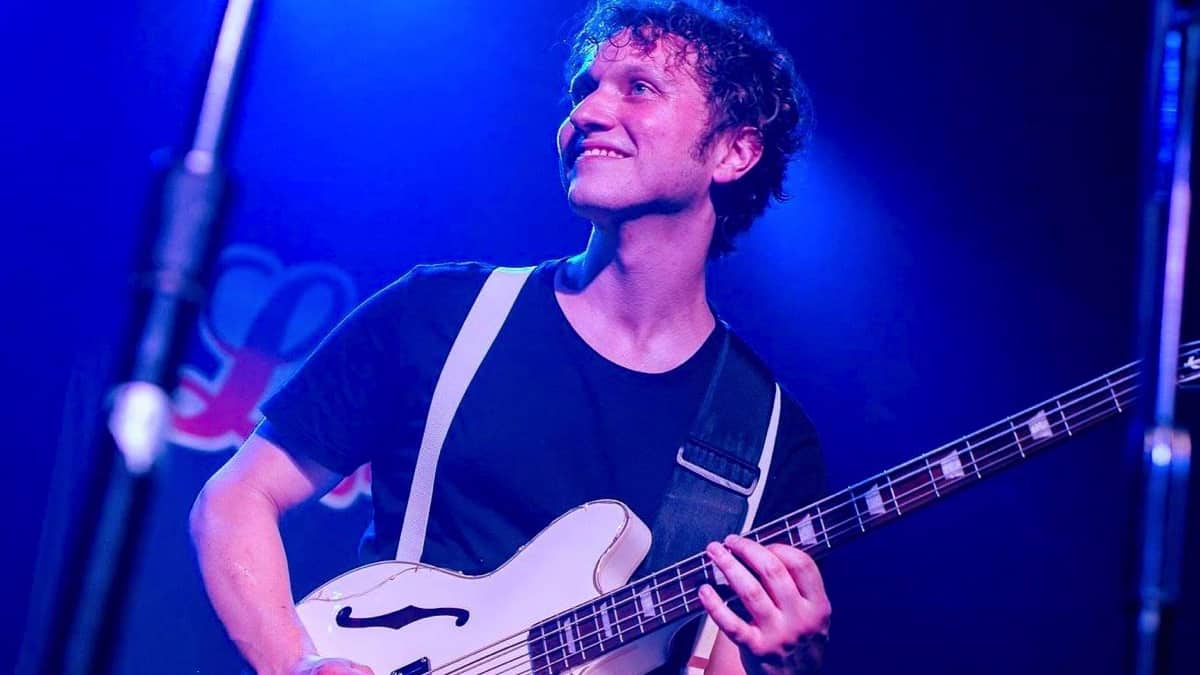
Bassist Chris Agar…
We recently had the opportunity to chat with Chris Agar, an NYC area bassist who is currently laying down the low end for indie rocker Collin Stanley. Agar collaborated with Stanley on his latest single, “Gone Through Hell,” a highly introspective song detailing the isolation and uncertainty Stanley felt during the pandemic. Recorded at Bull Productions Recording Studio in Miami, Agar channels John Paul Jones, and masterfully builds tension throughout each verse until it explodes into an eventual frenzy.
Read on to hear how the song took shape, and how he wrestled with a Gibson Grabber to get that bass tone.
How long have you known Collin, and how did you originally become acquainted?
I met Collin over six years ago in a tiny rehearsal space/percussion studio in Williamsburg, Brooklyn for a female-fronted rock band called DDWhite. The space couldn’t have been bigger than 10 x 10 and barely fit all of us. One of the first tunes we jammed was “Ramble On” by Led Zeppelin. At the time, I was playing upright bass with Tiffany (the frontwoman) and we had more of a folksy rock vibe. Collin suggested I switch to the electric bass to allow for more flexibility and to get harder tones.
Collin and I quickly realized we had mutual friends and instantly connected over our love of the Detroit music scene since we both had a strong connection to the region. We have a well-established creative relationship and have collaborated on many projects, including some of my own. The idea for Made on Tape was hatched in Collin’s kitchen and he co-wrote and played guitar on my Working Flakes project.
Tell us about your live rig/setup whenever you guys play together. Do you have any go-to’s for his project as far as pedals or guitars?
Living in NYC, you quickly learn to adapt to all kinds of rehearsal scenarios, and it’s difficult to maintain a consistent rock rig, in terms of amplifiers and speaker cabinets, unless you don’t mind pissing off your neighbors.
Obviously, you can tell that saturation/distortion/overdrive is a big part of the bass sound with Collin Stanley. I typically use an Ashdown Nate Mendel Dual Overdrive, which gives a TON of flexibility. One circuit sounds more like tube amp distortion, and the other is heavier, and you control them independently. You can even switch on both circuits simultaneously for BIG distortion.
I like semi-hollow basses, probably because I studied and play a lot of upright bass, too. I frequently use the Epiphone Jack Casady signature bass when performing with Collin because it gives such an amazing sustain and very aggressive sound all on its own, no effects.
Did you collaborate virtually or in person at the studio for the new single?
In-person. Collin and his roommates got COVID in the early days when we didn’t know how that would turn out, but after a few months, we started getting together in a studio space in Greenpoint. Collaborating remotely is amazing and has opened up a lot of opportunities, but I much prefer being in a room with someone. The feedback is instantaneous, and we trust each other’s instincts as much as our own, which is rare in a creative relationship.
How did you approach and arrange “Gone Through Hell” on bass? Did you draw some inspiration from your own personal experiences with the pandemic?
All I can say is that being in New York City during this time was a real eye-opener. I’m genuinely relieved that most people living in other parts of the country/world didn’t really ever feel the urgency, but we literally had bodies filling up cold trucks outside of hospitals back in early 2020. The city that never sleeps suddenly stopped, and it was simultaneously horrifying and peaceful.
Collin’s initial idea brought these emotions to the table, and I just responded. Musically speaking, he came in with that riff that you hear in the post-choruses, and all I did was take a nugget and put my own rhythmic flavor on it. You can extract so much if you limit yourself… I highly recommend checking out Bernard Hermann film scores for a masterclass in this concept.
GTH has a bit of an anthemic, Zeppelin-esque vibe. Who are some of your bass heroes? Are you a big John Paul Jones fan?
Hell yeah! John Paul Jones is one of the godfathers of rock bass, and his musicianship helped fill out those Zeppelin records with all the other instruments as well. Like I mentioned earlier, Collin and I connected on “Ramble On.”
I’m one of the fortunate minority who studied bass for four years with one of his heroes, Robert Hurst. His credentials are too numerous to list here, but you might know him from playing with Branford Marsalis, including in the Tonight Show band in the 90s and on films like Spike Lee’s “Do the Right Thing”. He’s the one who taught me “if you put rhythm first, everything else will follow.”
Another bass hero is Tim Lefebvre. When I was visiting NYC in 2005, I believe it was my classmate Theo Katzman who hipped us Michigan kids to the 55 Bar, where I got my socks blown off by Wayne Krantz, Lefebvre, and Keith Carlock. This musical moment inspired me to want to move to NYC, which I did nine years later. Tim and I connected during this pandemic and I got to relay that story to him. His groove is immaculate, and his sonic palette is unmatched in the bass community.
In terms of recordings, the big heroes for me are Tim Commerford, for his tone and attitude; James Jamerson for his fearless improvisation over “pop” tunes; Flea who inspired me to get my first Musicman Stingray; Tina Weymouth for her foundational playing in Talking Heads; and Charlie Haden for his incredible lyricism in the low register of the bass. Plus, society needs another “Liberation Music Orchestra.”
I could talk about bass players all day and I feel guilty for leaving out about 500 more who I love dearly.
Which fuzz pedal are you using on it? It sounds mean as hell!
You may be surprised, but no fuzz pedals were used in the making of this tone…
When Collin and I were writing and coming up with ideas in the studio, I was just plugged straight into an Apollo 8 interface, and I used the Marshall JCM8 plugin for ridiculous distortion.
However, that’s not what you’re hearing on the record.
During the pandemic, Collin was living in Miami and making connections down there. We recorded at Bull Productions Recording Studio with the engineer Ryan Haft.
I tracked the bass with the in-house Gibson Grabber, recording live along with the drummer Cristian Acevedo. I had to fight that bass, but I love struggling with tough instruments. Ryan heard my demo tone, so to achieve big heavy nastiness, he set up an old Ampeg SVT tube head on an 8×10 cabinet. Then he CRANKED the drive.
That’s the tone. Unfortunately, I’ve never heard a pedal that can quite replicate the sound of a big bass amp breaking up in a room. I’m sure readers are familiar with Tim Commerford’s live rig of three SVTs and three 8×10 cabinets. He’s got one for “clean”, one for “medium” and one for “heavy.” It’s not for show, those things move some fucking air in the best way.
When will we be seeing you perform with Collin? Are there any tour plans on the table?
Our main focus has been on writing and recording, and there’s more coming down the pike. We’ll start hitting the local scene before going out on a tour, and I so very eagerly look forward to performing live again. That human connection is so important, and humans have been making music together since the dawn of time.
Finally, if you had your own signature bass, which features would it have, what would the finish be, and how many strings would it have?
I’m a less-is-more type of player, so my signature bass would have one pickup like the Jack Casady or Music Man Stingray, and it would only have three strings, E, A, and D…and a tone knob. Can’t forget that. A volume knob, too. I don’t really care about the finish cuz you can always cover it with stickers or refinish it.
Visit Collin Stanley online:
collinstanley.com
ffm.bio/collinstanley
Facebook
Instagram
Spotify
Apple Music
Deezer
Tidal
Amazon Music
Youtube
Bandcamp
Soundcloud
Features
Alberto Rigoni On Unexpected Lullabies
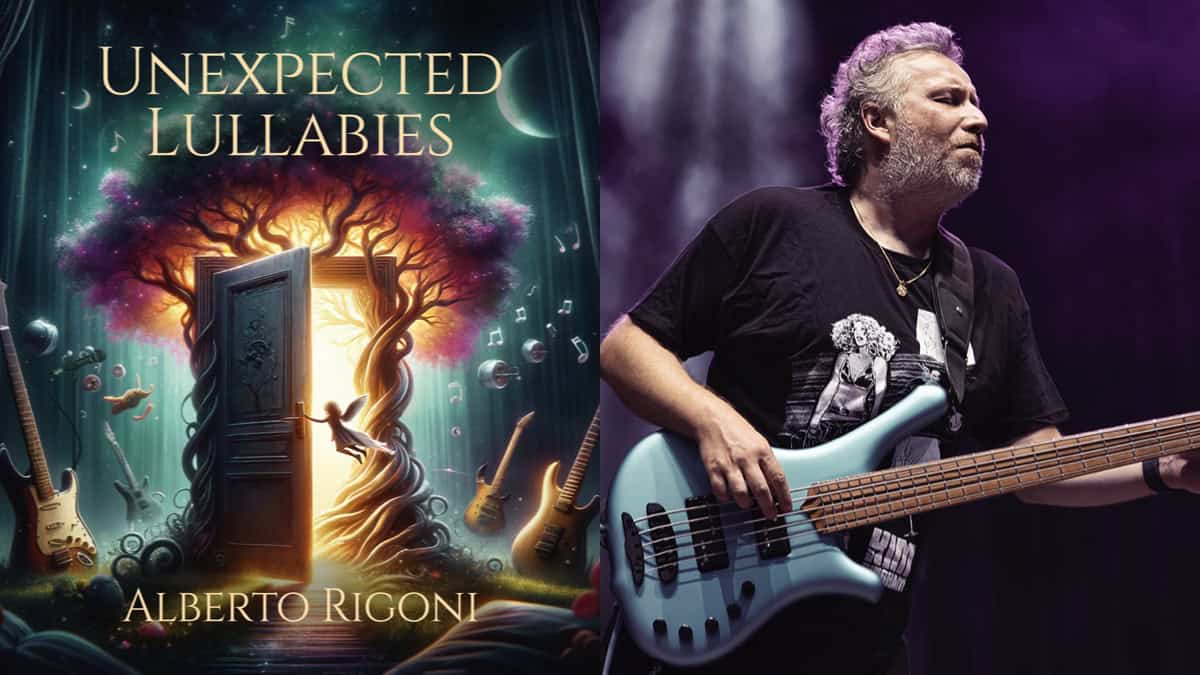
Readers have been fans of the composer, bass player, and Bass Musician contributor Alberto Rigoni for some time now.
In this interview, we had the opportunity to hear directly from Alberto about his love of music and a project near and dear to his heart, “Unexpected Lullabies”…
Could you tell our readers what makes your band different from other artists?
In 2005, I felt the urge to write original music. My first track was “Trying to Forget,” an instrumental piece with multiple bass layers (rhythm, solo, and arrangement), similar to the Twin Peaks soundtrack. When I played it for a few people, they really liked it, and I decided to continue composing based on my instinct and ear without adhering to any specific genre. In 2007, I released “Something Different” with Lion Music. The title says it all! Since then, I’ve released many solo albums, each different from the others, ranging from ambient to prog, fusion, jazz, and new age. I am very eclectic!
How did you get involved in this crazy world of music?
As a child, I listened to the music my parents enjoyed: my dad loved classical music, while my mom was into Pink Floyd, Genesis, Duran Duran, etc. These influences left a significant mark on my life. However, the turning point came at 15 when a drummer friend played me “A Change of Seasons” by Dream Theater, which was a shock! From that moment, I decided to play bass and cover Dream Theater songs, which I did for many years with my cover band, Ascra, until it disbanded in 2004. After that, I joined TwinSpirits (prog rock) led by multi-instrumentalist Daniele Liverani. Since then, I haven’t played any more covers!
Who are your musical inspirations, and what inspired the album and the songs?
My roots are in progressive rock metal, with influences from bands like Dream Theater, Symphony X, and many others. However, I listen to all genres and try to keep an open mind, which helps me compose original music. On bass, I was significantly inspired by Michael Manring and Randy Coven (bassist of Ark, Steve Vai, etc.). But I don’t have a real idol; I just follow my own path without compromise.
What are your interests outside of music?
Living in Italy, I love good food and wine! Beyond that, I have a deep interest in art in general and history, not just of my country. I enjoy spending time with friends, skiing, biking, and walking in nature. This is how I spend my free time. The rest of my time is devoted to music and my family!
Tell us about the new album.
It is definitely an out-of-the-box album. When I found out last year that I was going to have a baby girl, I decided to compose a sort of lullaby album, but I didn’t want to cover already famous lullabies. So, I started composing new tunes with the goal of creating an album that was half-sweet and half-hard rock. I did include some covers like “Strangers in the Night” by Frank Sinatra, sung by Goran Edman, former lead singer of Malmsteen. It’s not exactly a lullaby, but I felt the lyrics fit the album, as does the instrumental version of “Fly Me to The Moon.” There are also tracks with just bass and piano (Nenia) or two basses (Vicky). It was definitely an interesting creative process!
What is the difference between the new album and your previous releases, and will there be any new material from your other outfit called BAD AS?
BAD AS is essentially a metal band with several influences including prog. My solo genre is quite different, although there are some metal songs on a few albums. It’s always difficult for me to categorize my music… let’s say it’s a mix of prog, ambient, fusion, and new age.
Where was the album recorded, who produced it, and how long did the process take?
I produced my last album entirely by myself, including mixing and mastering. Unlike other albums I’ve produced within a few months, this one took much longer, perhaps because I was very busy or maybe because I wanted it to be perfect for my daughter, who is now three months old. In any case, I am satisfied. Once again, I did something different from my previous albums.
What is the highlight of the album for you and why?
My favorite song is the first track titled “Vittoria,” named after my daughter. It’s the intro to the record and isn’t very long, but the melody stuck in my head. Another standout track is the instrumental version of “Fly Me to The Moon” by Frank Sinatra, where I used fretless bass. The first part is sweet, the second part definitely rocks!
How are the live shows going, and what are you and the band hoping to achieve?
With BAD AS, this year we shared the stage with David Ellefson’s (former Megadeth bassist) band and talented young singer Dino Jelusik (White Snake). We plan to continue performing all over Europe!
What’s in store for the future?
I am working on an instrumental project called Nemesis Call, a progressive shred prog metal album with various influences. It will feature guest appearances from famous musicians like drummers Mike Terrana and Thomas Lang, as well as young talents like Japanese guitarist Keiji from Zero (19), 14-year-old Indian drummer Sajan Young, and guitarists Alexandra Zerner and Alexandra Lioness, Hellena Pandora. It’s scheduled for release at the end of the year or early 2025. As an independent artist, I have launched a fundraising campaign with exclusive pledges at www.albertorigoni.net/nemesiscall. And no, I am not begging; the album will be released anyway!
What formats is the release available in?
Unexpected Lullabies is available both as a Digipack CD and on streaming platforms.
What is the official album release date?
June 4th, 2024.
Thanks for this interview Bass Musician Magazine and for the continued support to my career!
Visit Online:
www.albertorigoni.net
www.youtube.com/albertorigoni
albertorigoni.bandcamp.com
www.instagram.com/albertorigonibassplayer
www.facebook.com/albertorigonimusic
www.tiktok.com/@albertorigonibassist
CD Track Listing:
1. Vittoria
2. Fly Me to the Moon
3. Azzurra
4. Dancing with Tears in My Eyes (feat. John Jeff Touch)
5. Out of Fear
6. Veni Laeatitia (feat. Alexandra Zerner)
7. Nenia
8. Slap Lullaby (feat. Karl Clews)
9. Saga
10. Vicky (feat. Michael Manring)
11. Ocean Travelers (feat. Vitalij Kuprij)
12. Strangers in the Night (feat. Göran Edman)
13. Peaceful
14. Un uomo che voga (feat. Eleonora Damiano)
Band Line-Up:
- Tommaso Ermolli arrangements on “Vittoria”
- Sefi Carmel on “Fly Me to the Moon” (Cover) (except for the keyboard solo by Alessandro Bertoni)
- Piano and keyboards by Alessandro Bertoni on “Azzurra”
- Leonardo Caverzan, guitars, and John Jeff Touch, vocals on “Dancing with Tears in my Eyes” (Cover)
- T. Ermolli keys on “Out of Fear”
- Alexandra Zerner everything on “Veni Laetitia”
- Daniele Bof piano on “Nenia”
- Karl Clews, piccolo bass on “Slap Lullaby”
- Jonas Erixon vocals and guitars on “Saga”
- Michael Manring bass on “Vicky”
- Vitalij Kuprij, keyboards and piano, and Josh Sapna, guitars, on “Ocean Traveler”
- Göran Edman, vocals, Emiliano Tessitore, guitars, Emiliano Bonini, drums, on “Strangers in the Night” (Cover) everything by Alberto Rigoni and vocals by Federica “Faith”
- Sciamanna on “Peaceful”
- T. Ermolli, guitars, and Eleonora Damiano, vocals, on “Un uomo che voga All drums programmed by Alberto Rigoni
Bass Books
Interview With Barker Bass’s Inventor and Writer Lee Barker
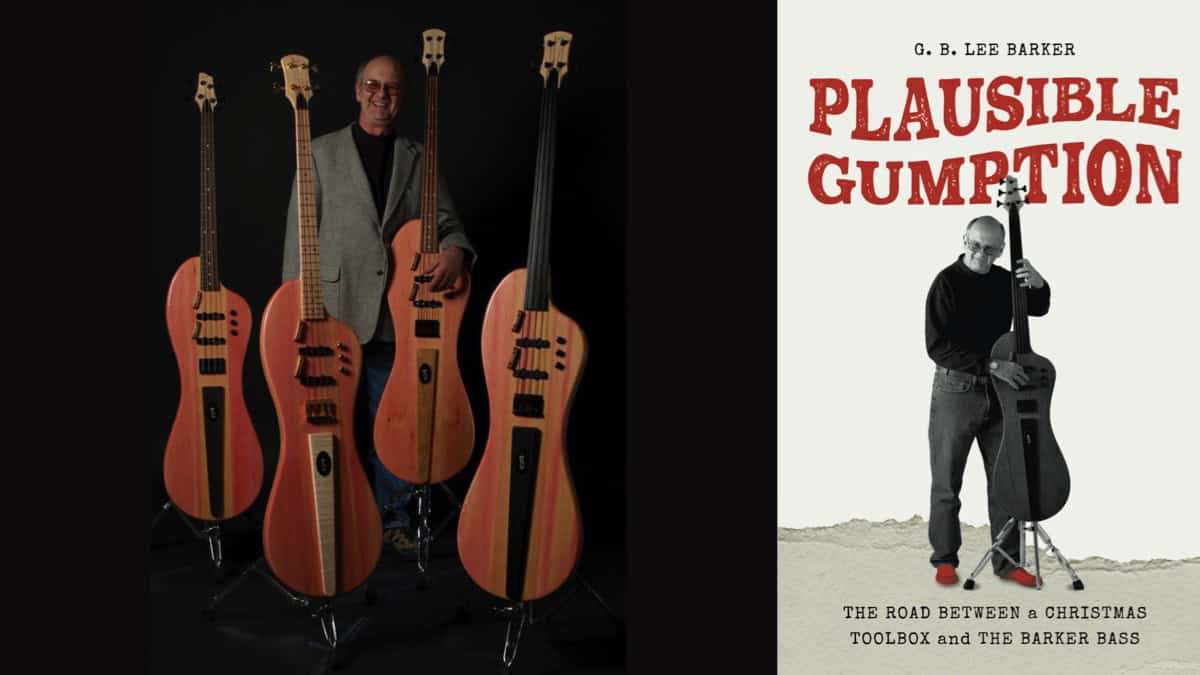
If you are an electric bass player, this is an exciting time to be alive as this relatively new instrument evolves around us. Some creative individuals have taken an active role in this evolution and made giant leaps in their own direction. Lee Barker is one of these inventive people having created the Barker Bass.
Fortunately, Lee is also an excellent writer (among so many talents) and has recently released his book “Plausible Gumption, The Road Between a Christmas Toolbox and The Barker Bass”. This book is a very fun read for everyone and shares a ton of details about Lee’s life in general, his experiences as a musician, a radio host, and a luthier. Now I am fortunate to have the great opportunity to gain even more insights into this renaissance man with this video interview.
Plausible Gumption, The Road Between a Christmas Toolbox and The Barker Bass is available online at Amazon.com
Features
Bergantino Welcomes Michael Byrnes to Their Family of Artists
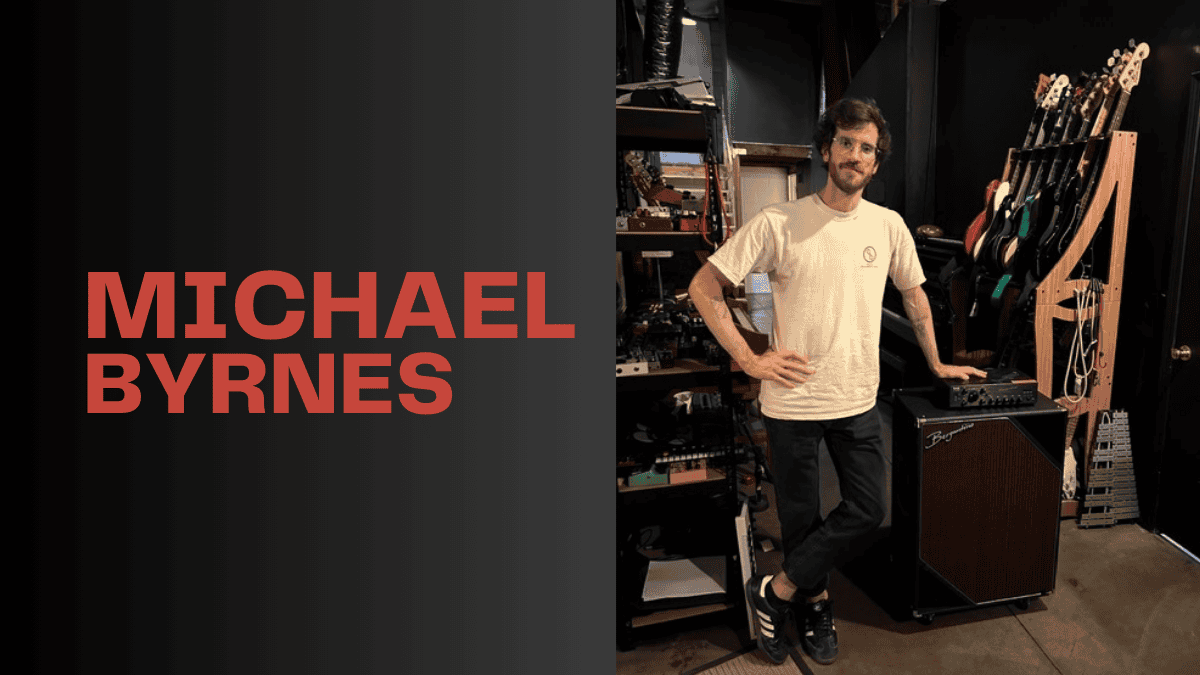
Interview and photo courtesy of Holly Bergantino of Bergantino Audio Systems
With an expansive live show and touring, Mt. Joy bassist Michael Byrnes shares his experiences with the joyful, high-energy band!
Michael Byrnes has kept quite a busy touring schedule for the past few years with his band, Mt. Joy. With a philosophy of trial and error, he’s developed quite the routines for touring, learning musical instruments, and finding the right sound. While on the road, we were fortunate to have him share his thoughts on his music, history, and path as a musician/composer.
Let’s start from the very beginning, like all good stories. What first drew
you to music as well as the bass?
My parents required my sister and I to play an instrument. I started on piano and really didn’t like it so when I wanted to quit my parents made me switch to another instrument and I chose drums. Then as I got older and started forming bands there were never any bass players. When I turned 17 I bought a bass and started getting lessons. I think with drums I loved music and I loved the idea of playing music but when I started playing bass I really got lost in it. I was completely hooked.
Can you tell us where you learned about music, singing, and composing?
A bit from teachers and school but honestly I learned the most from just going out and trying it. I still feel like most of the time I don’t know what I am doing but I do know that if I try things I will learn.
What other instruments do you play?
A bit of drums but that’s it. For composing I play a lot of things but I fake it till I make and what I can’t fake I will ask a friend!
I know you are also a composer for film and video. Can you share more
about this with us?
Pretty new to it at the moment. It is weirdly similar to the role of a bass player in the band. You are using music to emphasize and lift up the storyline. Which I feel I do with the bass in a band setting. Kind of putting my efforts into lifting the song and the other musicians on it.
Everybody loves talking about gear. How do you achieve your “fat” sound?
I just tinker till it’s fat lol. Right now solid-state amps have been helping me get there a little quicker than tube amps. That’s why I have been using the Bergantino Forté HP2 – Otherwise I have to say the cliche because it is true…. It’s in the hands.
Describe your playing style(s), tone, strengths and/or areas that you’d like
to explore on the bass.
I like to think of myself as a pretty catchy bass player. I need to ask my bandmates to confirm! But I think when improvising and writing bass parts I always am trying to sneak little earworms into the music. I want to explore 5-string more!
Who are your influences?
I can’t not mention James Jamerson. Where would any of us be if it wasn’t for him? A lesser-known bassist who had a huge effect on me is Ben Kenney. He is the second bassist in the band Incubus and his playing on the Crow Left the Murder album completely opened me up to the type of bass playing I aspire towards. When I first started playing I was really just listening to a lot of virtuosic bassists. I was loving that but I couldn’t see myself realistically playing like that. It wasn’t from a place of self-doubt I just deep down knew that wasn’t me. Ben has no problem shredding but I was struck by how much he would influence the song through smaller movements and reharmonizing underneath the band. His playing isn’t really in your face but from within the music, he could move mountains. That’s how I want to play.
What was the first bass you had? Do you still have it?
A MIM Fender Jazz and I do still have it. It’s in my studio as we speak. I rarely use it these days but I would never get rid of it.
(Every bass player’s favorite part of an interview and a read!) Tell us about
your favorite bass or basses. 🙂
I guess I would need to say that MIM Jazz bass even though I don’t play it much. I feel connected to that one. Otherwise, I have been playing lots of great amazing basses through the years. I have a Serek that I always have with me on the road (shout out Jake). Also have a 70’s Mustang that 8 times out of 10 times is what I use on recordings. Otherwise, I am always switching it up. I find that after a while the road I just cycle basses in and out. Even if I cycle out a P bass for another P bass.
What led you to Bergantino Audio Systems?
My friend and former roommate Edison is a monster bassist and he would gig with a cab of yours all the time years ago. Then when I was shopping for a solid state amp the Bergantino Forté HP2 kept popping up. Then I saw Justin Meldal Johnsen using it on tour with St. Vincent and I thought alright I’ll give it a try!
Can you share a little bit with us about your experience with the Bergantino
forte HP amplifier? I know you had this out on tour in 2023 and I am pretty
certain the forte HP has been to more countries than I have.
It has been great! I had been touring with a 70’s SVT which was great but from room to room, it was a little inconsistent. I really was picky with the type of power that we had on stage. After a while, I thought maybe it is time to just retire this to the studio. So I got that Forte because I had heard that it isn’t too far of a leap from a tube amp tone-wise. Plus I knew our crew would be much happier loading a small solid state amp over against the 60 lbs of SVT. It has sounded great and has really remained pretty much the same from night to night. Sometimes I catch myself hitting the bright switch depending on the room and occasionally I will use the drive on it.
You have recently added the new Berg NXT410-C speaker cabinet to your
arsenal. Thoughts so far?
It has sounded great in the studio. I haven’t gotten a chance to take it on the road with us but I am excited to put it through the paces!
You have been touring like a madman all over the world for the past few
years. Any touring advice for other musicians/bass players? And can I go to Dublin, Ireland with you all??
Exercise! That’s probably the number one thing I can say. Exercise is what keeps me sane on the road and helps me regulate the ups and downs of it. Please come to Dublin! I can put you on the guest list!
It’s a cool story on how the Mt. Joy band has grown so quickly! Tell us
more about Mt. Joy, how it started, where the name comes from, who the
members are and a little bit about this great group?
Our singer and guitarist knew each other in high school and have made music together off and on since. Once they both found themselves living in LA they decided to record a couple songs and put out a Craigslist ad looking for a bassist. At the time I had just moved to LA and was looking for anyone to play with. We linked up and we recorded what would become the first Mt. Joy songs in my house with my friend Caleb producing. Caleb has since produced our third album and is working on our fourth with us now. Once those songs came out we needed to form a full band to be able to do live shows. I knew our drummer from gigging around LA and a mutual friend of all of us recommended Jackie. From then on we’ve been on the road and in the studio. Even through Covid.
Describe the music style of Mt. Joy for me.
Folk Rock with Jam influences
What are your favorite songs to perform?
Always changing but right now it is ‘Let Loose’
What else do you love to do besides bass?
Exercise!
I always throw in a question about food. What is your favorite food?
I love a good chocolate croissant.
Follow Michael Byrnes:
Instagram: @mikeyblaster
Follow Mt. Joy Band:
Instagram: https://www.instagram.com/mtjoyband
Facebook: https://www.facebook.com/mtjoyband
Bass Videos
Artist Update With Mark Egan, Cross Currents
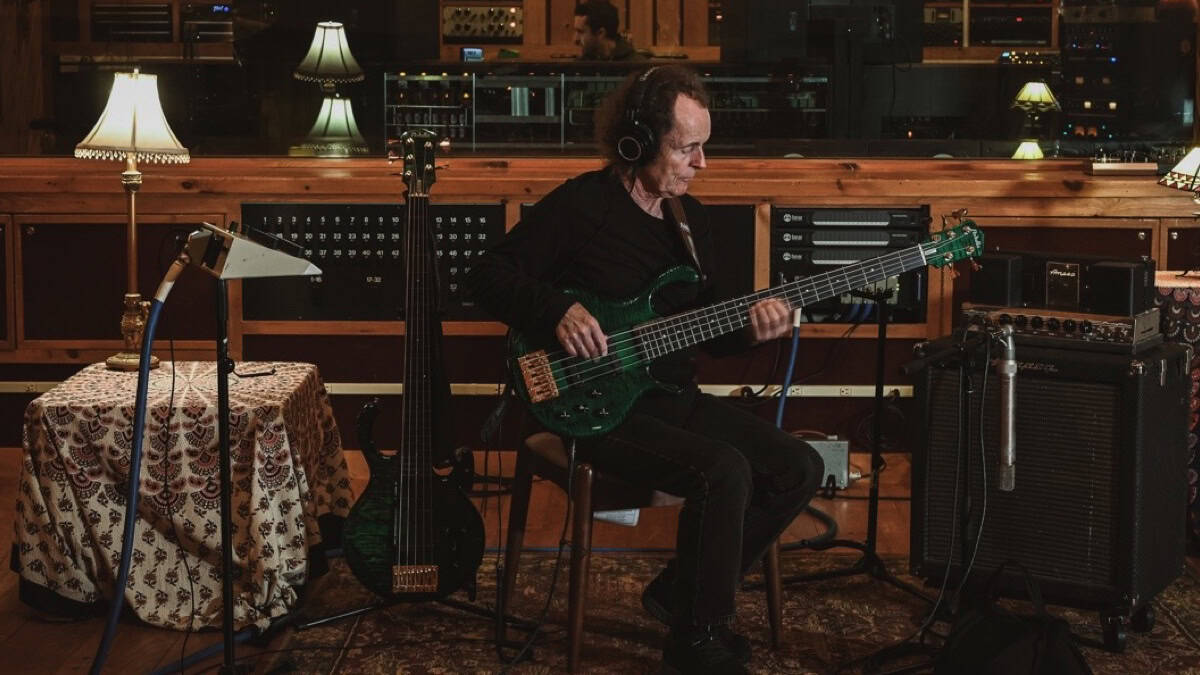
I am sure many of you are very familiar with Mark Egan as we have been following him and his music for many years now. The last time we chatted was in 2020.
Mark teamed up with drummer Shawn Pelton and guitarist Shane Theriot to produce a new album, “Cross Currents” released on March 8th, 2024. I have been listening to this album in its entirety and it is simply superb (See my review).
Now, I am excited to hear about this project from Mark himself and share this conversation with our bass community in Bass Musician Magazine.
Photo courtesy of Mark Egan
Visit Online:
markegan.com
markegan.bandcamp.com
Apple Music
Amazon Music
Bass Videos
Interview With By the Thousands Bassist Adam Sullivan
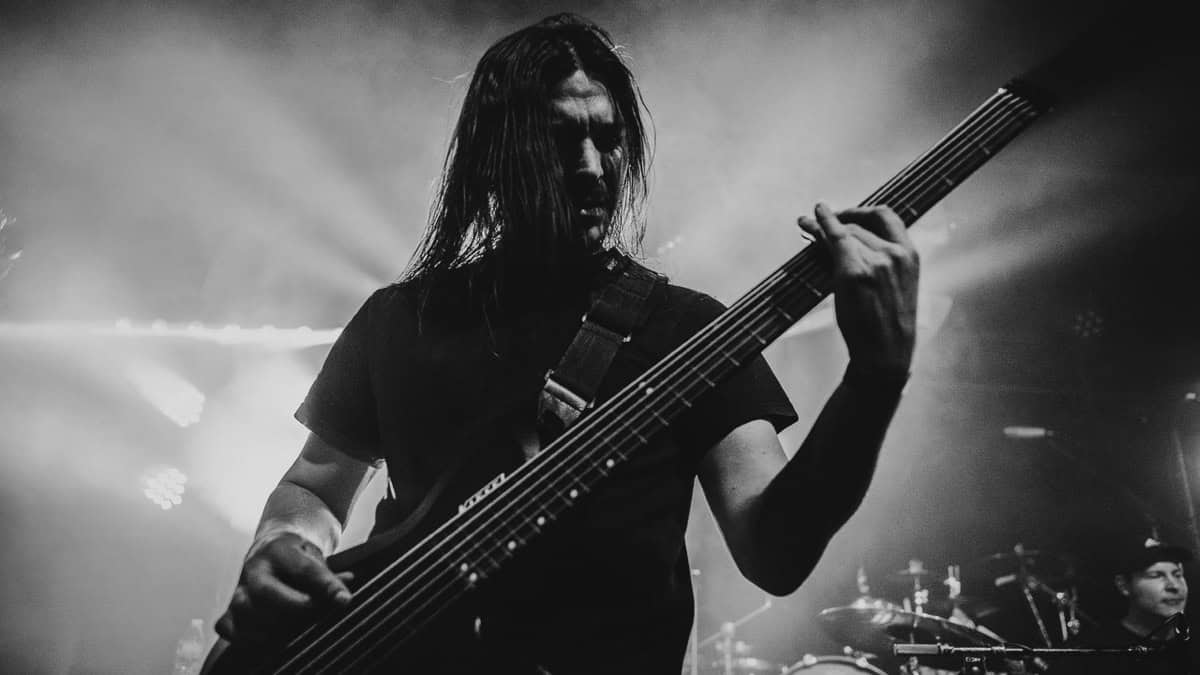
Bassist Adam Sullivan…
Hailing from Minnesota since 2012, By the Thousands has produced some serious Technical Metal/Deathcore music. Following their recent EP “The Decent”s release, I have the great opportunity to chat with bassist Adam Sullivan.
Join me as we hear about Adam’s musical Journey, his Influences, how he gets his sound, and the band’s plans for the future
Photo, Laura Baker
Featured Videos:
Follow On Social
IG &FB @bythethousands
YTB @BytheThousands




